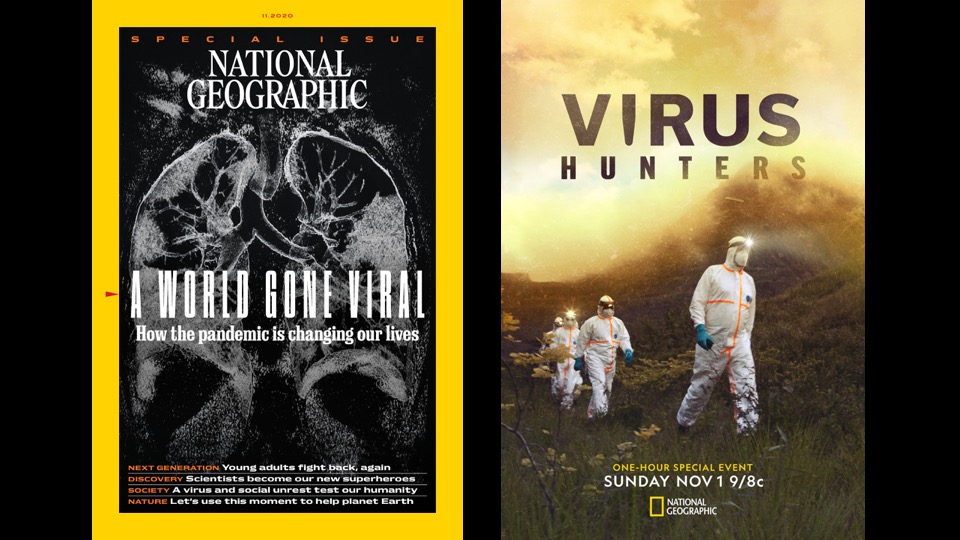The November issue of National Geographic magazine is a single-topic issue that takes an in-depth look at the novel coronavirus, including how it is affecting everyday life and remaking our world.
The cover story of the November issue takes an intimate look at how the virus has upended our lives. Photographers in five countries show how COVID-19 has become a painful, shared experience around the world.
This magazine issue features stories that examine how we move on from this devastating year, what our post-pandemic world look like, how COVID-19 has shined a spotlight on society’s most vulnerable people, how this year has made us more aware of nature and the importance of saving our planet, and why it is crucial to trust science.

In conjunction with this magazine issue, a one-hour television documentary special will premiere November 1 at 9pm ET on National Geographic.
“Virus Hunters” reveals the raw and chilling stories of the heroic experts leading the most critical scientific mission of a generation. The special features National Geographic Explorer, epidemiologist and ecologist Dr. Christopher Golden and ABC News foreign correspondent James Longman as they embark on a journey to speak with the brave scientists that are connecting the dots on culture, disease and the environment to discover the patterns that cause global health crises.
Together they meet with Dr. Kendra Phelps, a bat scientist; Dr. Jim Desmond, a wildlife veterinarian who specializes in emerging infectious diseases; wildlife biologist Jess Carstens; and research veterinary medical officer specializing in swine viral pathogens Dr. Amy Vincent, to uncover how the world can prevent the next global disaster.
National Geographic is also supporting its global community of Explorers, educators and storytellers who are on the frontlines of COVID-19.
Since March, the National Geographic Society has launched emergency funds totaling more than $2.5 million. Grant opportunities are available for K-12 educators who are designing innovative resources to help other educators teach in remote and hybrid-learning environments as well as storytellers who wish to cover COVID-19 within their local communities, with an emphasis on delivering news to underserved populations.
In a socially distant and remote learning world, teachers are doing much more than simply adapting their approach: they’re pushing boundaries, testing new skills and advancing learning in profoundly new ways. To support these efforts, the Society is offering grants ranging from US $1,000–8,000 to both formal and informal classroom educators. Once developed, the grant-funded resources will be freely available on the National Geographic Education website.
As COVID-19 continues to evolve and impact communities around the globe, emergency funding for journalists have been made available by the National Geographic Society.
Journalism can play several roles in supporting communities around the globe. It can disseminate critical information to keep people safe and informed. This emergency fund supports journalists who are covering the impacts of the COVID-19 pandemic within their own communities while also shedding light on how the disease is disproportionately impacting communities that don’t have access to the information and resources needed to understand or prevent it. This fund, which closes on November 15, is designed to quickly deliver support so that both individual stories and longer series of content may be created.